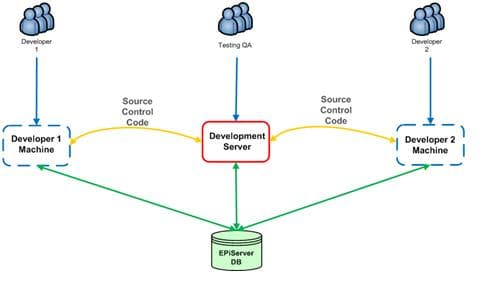Learning a new CMS is always and adventure, sometimes we find functionalities we always wanted or were useful for old projects we worked on. Typically we get a tutorial and go over a sample site and after that we are pretty much ready to build our first simple site. However, sites are build by teams of people and what the tutorial never tell us is how to set up the CMS to share the content through all the developers.
In a CMS like RedDot we don’t have this dilemma because all the content will be accessed by the browser and the code will also be by the web. However, in a system like EPiServer or Sitecore where you have the CMS interface via web but the code is edited in visual studio we have to think how we will organize.
The architecture of EPiServer offers us different methods we can use to build our site, but the one we have selected as the more efficient is defined on the next three steps:
- Have a centralized database.
- Share the code and assets (VPP folder) on a source control.
- Install the CMS on a central server and also on each individual developer’s machine.

The advantages of this methodology are:
- Each programmer can develop at their own machine
- Content will be available to all the machines
- Code changes will be on the source control
- Testing can be done on the centralized server and programmers won’t be interrupt
The disadvantages we need to consider:
- f a page type is create and the template has not being download from the source control we will get an error.
- The CMS speed depends on the database server.











